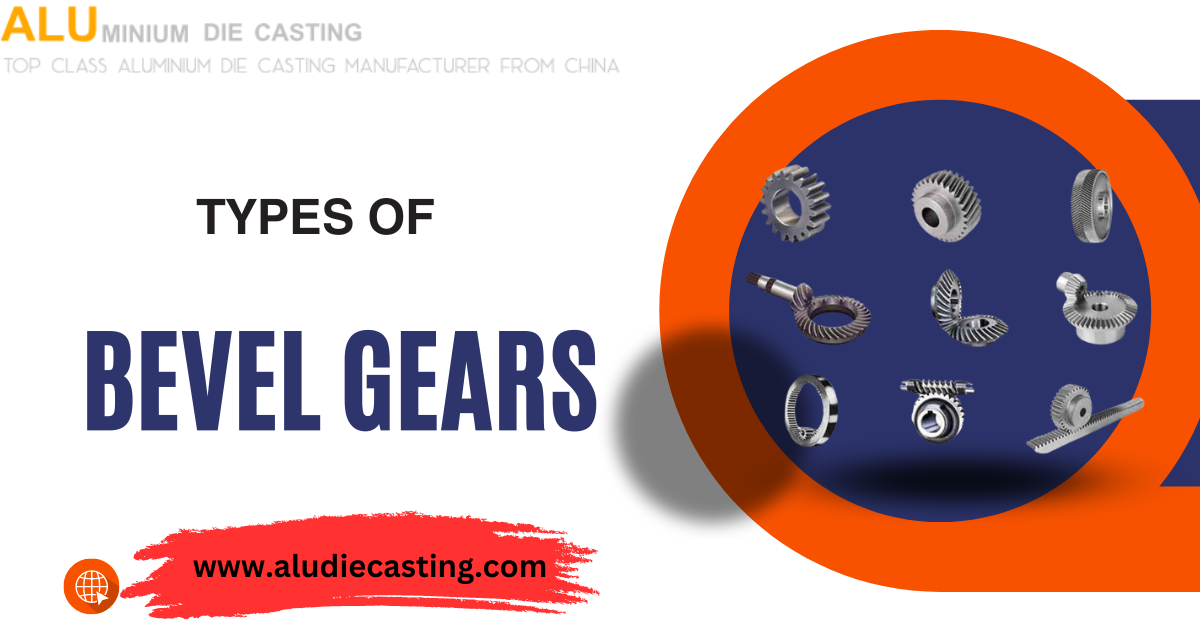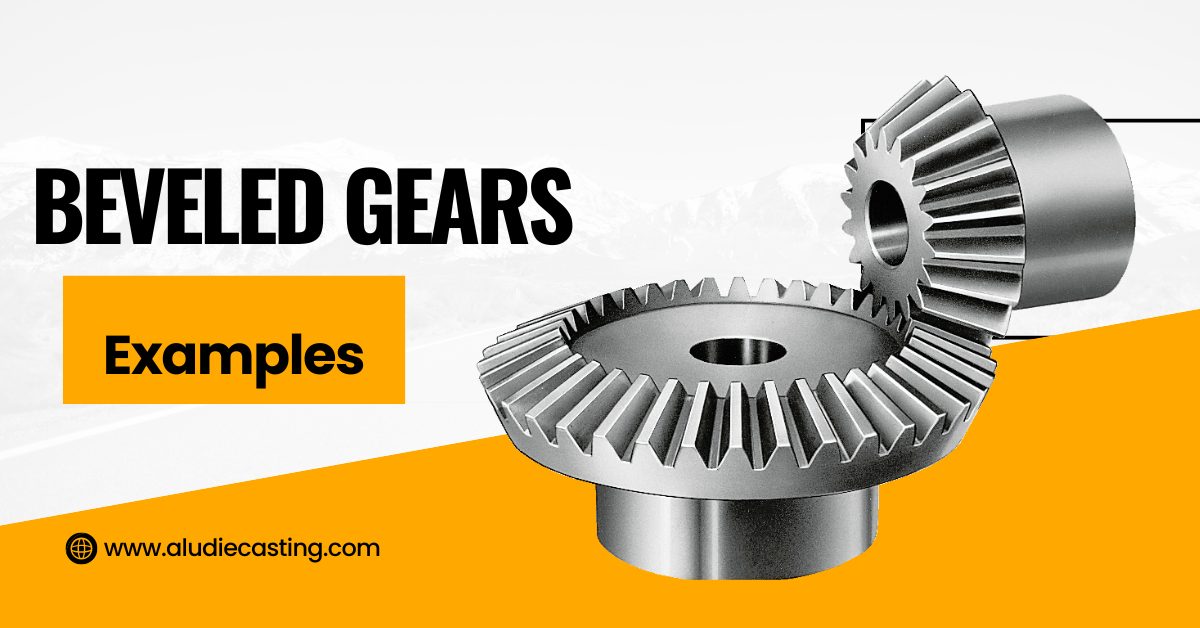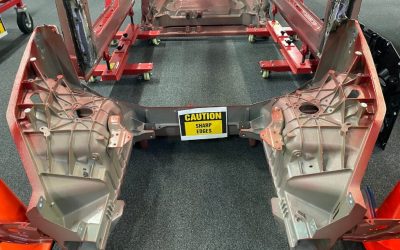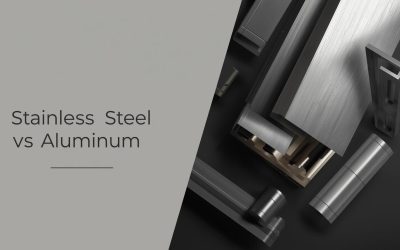Power transmission plays a critical role in machines. Bevel gears are one of the key components which ensure smooth operation in several applications. In this article we shall read about bevel gears, their features, and diverse applications.
Whether you are an engineer or a beginner seeking some valuable information about bevel gears, this guide will expand your reach to mechanical components.
If you use bevel gears to change the direction of power transmission, you will be able to transmit power from one source in all directions.
What are beveled gears?
The bevel gears are used in combination with other bevel gears. It has teeth carved into the sides of a cone and is used to transmit rotation between two axes to intersect at right angles. They are installed so that their rotating axes intersect when changing the direction of the power axis to a different axis or combining bevel gears.
Types of Bevel Gears
- Straight Bevel Gear:
- Spiral Bevel Gear:
- Zerol Bevel Gear:
- Hypoid Gear:
- Miter Gear:
Bevel gears are widely used in all industries and are divided into several types. Bevel Gears products are produced in enormous quantities throughout the entire world. Additionally, with a market share of roughly 42%, China leads the other two countries, Japan and South Korea, with shares of 16% and 6%, respectively. Similarly, gear manufacturers in the USA also have a great share of the market.
The following are the most common types of bevel gears:
Straight Bevel Gear
Straight bevel gear, with a 43% market share, is the largest product category of bevel gear. A straight bevel gear is a type of bevel gear where the teeth are cut straight and taper off towards the apex of the gear. Since the force acting in the axial direction is small, it is often used in places where thrust loads are averse.
It also has the advantage of simplifying the bearing. The disadvantage is that when rotating at high speeds, the noise and vibration increase. Because of these features, straight bevel gears are recommended when cost is a priority, high-speed rotation is not required, and noise is not a problem.
Generally used when operating at a relatively low speed (circumferential speed of 2m/s or less). It is relatively easy to manufacture and is especially suitable for machine tools, printing machines, etc., as well as differential devices—the most popular bevel gear for power transmission.
Spiral Bevel Gear
Spiral bevel gear is another type of bevel gear. The tooth traces are spiral and helical, creating a helical angle, and the two intersecting gears intertwine with each other, creating a stronger mesh. The advantages include low noise and vibration even during high-speed rotation, high tooth surface strength, and less stress on the tooth surface.
In addition, it has a curved tooth trace (typically an arc) on the pitch cone, allowing for smoother operation than straight bevel gears. This is mainly used for high-speed operation with a pitch circumferential speed of 10 m/s or more.
Zerol Bevel Gear (Spiral Bevel Gear)
A spiral bevel gear with a helix angle of 0 degrees is also called a zero bevel gear. It is a bevel gear that has the characteristics of straight bevel gears and spiral bevel gears with the same force applied to the teeth.
Compared to spiral bevel gears, the major advantage is that the thrust load can be suppressed. It is used in industrial equipment and automobiles. The tooth traces are curved and have a very beautiful appearance. But unlike the tooth profile of a spiral bevel gear, it does not have a tooth profile in which the teeth are twisted together in a conical shape on the outer periphery.
Hypoid Gear
A hypoid gear has spiral tooth traces and staggered shafts that are neither parallel nor intersecting on the input or output sides of the gear. Although similar to spiral bevel gears, they differ in that their axes intersect.
Both are similar in that they utilize a large reduction ratio and are used with large torque. These gears are mainly used in automobile drive systems, train drive systems, speed reducers (buses, trucks, luxury private cars), etc.
The advantages of hypoid gears include a large reduction ratio, low noise and vibration, and strength that can withstand large torque. Regarding the reduction ratio, hypoid gears can increase the number of teeth on the input side (hypoid pinion) and the output side (hypoid gear).
Miter Gear
Gears with the same number of teeth are called miter gears. The standard shaft angle is 90 degrees, and the pitch plane is 45 degrees. There are also 45-degree, 60-degree, and 120-degree miter gears, and miter has the meaning of miter or joint. These are the power transmitting, driving, and transporting parts of equipment.
Power can be transmitted through orthogonal axes. It is often used in applications where there is no need to change gears, just by changing the direction of rotation of a shaft.
Miter gear is mainly suitable for use in the semiconductor industry, the food industry, general industrial machinery, and agricultural machinery.
What are spiral gears?
Spiral gears, also known as helical gears. They are a type of gear with teeth that are cut at an angle along the face of the gear.
Here are their key features:
- Helical Teeth:
- Reduced Noise and Vibration:
- Higher Efficiency:
- Axial Thrust Load:
Understanding Difference Between Bevel and Spiral Gear
Straight Bevel Gear vs. Spiral Bevel Gear
|
Feature |
Straight Bevel Gear |
Spiral Bevel Gear |
|
Tooth Profile |
Straight teeth cut along the cone axis |
Helical teeth with a curved profile |
|
Noise Level |
Noisier due to tooth impact at engagement |
Quieter due to gradual tooth engagement |
|
Vibration |
Higher vibration due to impact |
Lower vibration due to smoother meshing |
|
Thrust Load |
Low axial thrust load |
Higher axial thrust load due to helical angle |
|
Efficiency |
Lower efficiency at high speeds |
Higher efficiency at high speeds |
|
Applications |
– Low-speed applications – Cost-sensitive applications – Applications where noise is not a major concern |
– High-speed applications – Applications requiring smooth operation – Applications where noise reduction is important |
|
Manufacturing Complexity |
Simpler to manufacture |
More complex to manufacture |
|
Cost |
Generally lower cost |
Generally higher cost |
Technical Aspects of Bevel Gears
|
Aspect |
Description |
|
Definition |
Gears with teeth cut along the flanks of a cone. |
|
Key Feature |
Conical shape and intersecting shafts at angles (usually 90 degrees). |
|
Main Function |
Transmit power between intersecting shafts, changing the direction of rotation. |
|
Advantages |
– Compact design for changing shaft direction. – Cost-effective (straight bevel gears). |
|
Disadvantages |
– Straight bevel gears can be noisy at high speeds. – Some types generate axial thrust load. |
Bevel gears are economical, have a long wear life, and have high functionality compared to metal or plastic gears. These are more efficient than worm gearing and have lower ratios that result in higher speeds and travel rates.
Typically, bevel gear jacks maintain a self-locking feature while providing higher travel speeds. Beside this. they offer several characteristics that are mentioned below:
Transmit Motion and Power Between Intersecting Axes
Bevel gears serve the purpose of transferring motion and power between intersecting axes. In a bevel gear, the gear threads intersect at approximately 90 degrees, allowing the direction of rotational force to be changed at a right angle.
It has a conical shape like an umbrella and is used in combination with bevel gears. Also, to change the rotation speed of bevel gears, use gears with different numbers of teeth, similar to spur gears.
Smooth and Efficient Power Transmission
Bevel gears are usually made from materials such as alloy steel, carbon steel, or hardened steel. These materials offer outstanding strength, resistance to impact, and wear resistance, ensuring smooth and effective power transmission.
Strong Chemical Resistance and Corrosion Resistance
Bevel gears are known to have exceptionally strong chemical and corrosion resistance, allowing them to be used in harsh conditions.
These gears have several advantages over other gears, including higher strength, improved accuracy grades, and a greater degree of reliability. They can sustain higher temperatures and guarantee long-term durability.
Requires a large-scale specialized Gear-Cutting Machine
The production of bevel gears requires a large-scale specialized gear-cutting machine. The most typical method is the Gleason method, and other methods include the Klingelnberg method and the Fiat method.
This is a special example of the tooth-cutting method for straight bevel gears, but this method is said to be inefficient. Cut each tooth groove using an indexing machine that can create an inclination equivalent to the cone angle and a milling cutter specifically designed for cylinders.
Good Lubricity and Ease of Molding
Bevel gears are valued because of their ease of molding, which makes them versatile components in manufacturing processes. Additionally, they have good lubricity to reduce friction and wear between gear teeth. These qualities make bevel gears suitable for various applications where smooth operation and durability are essential.
Bevel Gear Examples and Applications
Bevel gears, characterized by their conical shape and intersecting shafts, are vital components in various mechanical systems. Their versatility enables diverse applications, such as changing the direction of rotation by 90 degrees and transmitting power. Discover the several usages and applications of bevel gear listed below:
Automotive
Bevel gears are extensively utilized in automotive applications such as differential drives, transmission systems, and rear-wheel drive systems in automobiles. That enables wheels to rotate at varying speeds while maintaining traction and stability, especially during turns. Among its products, straight bevel gear is the largest segment, in which automotive has a 53% share.
Light and Heavy Equipment
Bevel gears are used for propulsion or running auxiliary units in light and heavy equipment like lawnmowers, small tractors, cement mills, cone crushers, sand mixers, forklifts, and mining machinery.
They are essential to the transmission of power by enabling the efficient transfer of rotational motion from the engine to the wheels or cutting blades.
Railroad Drives
Bevel gears are also utilized in the gearboxes and differentials of rail vehicles, enabling the locomotive to move forward or backward. They ensure smooth operation and efficient power distribution.
Construction Equipment
They are commonly employed in the driveshafts of construction vehicles such as excavators, loaders, and bulldozers. The bevel gears in construction equipment provide reliable torque transmission for lifting and positioning heavy loads with precision and control.
Industrial Gearbox
Bevel gears are employed in conveyor systems, elevators, and material handling equipment, ensuring efficient movement and transfer of goods within industrial facilities.
Special Applications
Bevel gears are used in coffee grinders with large hand-cranked handles, hand-cranked hand mixers and hand drills, and radio-controlled devices. These are also essential for aircraft engines, the marine industry, and the medical field for optimal performance and safety.
Bevel Gear Comparison Table (Die Casting)
|
Feature |
Bevel Gear |
Spiral Bevel Gear |
Helical Bevel Gear (Same as Spiral Bevel) |
Miter Gear (Bevel Gear Type) |
|
Tolerance |
±0.1 – 0.3 mm (depending on complexity) |
±0.1 – 0.2 mm (tighter tolerances due to helical teeth) |
±0.1 – 0.2 mm (tighter tolerances due to helical teeth) |
±0.1 – 0.3 mm (depending on complexity) |
|
Material |
Zinc Alloy (ZA-8, ZA-12) |
Aluminum Alloy (A356, A380) |
Aluminum Alloy (A356, A380) |
Zinc Alloy (ZA-8, ZA-12) or Aluminum Alloy (A356, A380) |
|
Approximate Cost |
Lower |
Higher than straight bevel |
Higher than straight bevel |
Similar to bevel gear |
|
Turnaround Time |
4-6 weeks |
6-8 weeks |
6-8 weeks |
4-6 weeks |
FAQ
What is a bevel gear?
A bevel gear is a type of gear with teeth that are cut along the surface of a cone. These gears are used to transmit motion and power between intersecting shafts that are not parallel to each other.
What are bevel gears used for?
Bevel gears are utilized for transmitting motion and power between intersecting shafts at different angles. Their versatility and ability to transfer motion efficiently at angles make them indispensable components across a wide range of industries and applications.
What are bevel gears used for?
Bevel gears change the direction of power transmission between intersecting shafts, typically at 90 degrees. They’re crucial components in cars, gearboxes, and various machines.
What is an advantage of a bevel gear?
Bevel gears offer a compact way to change shaft direction and are relatively simple to manufacture, making them cost-effective for many applications.
What are the cons of bevel gears?
Straight bevel gears can be noisy at high speeds, and some types generate an axial thrust load that requires additional bearing support.
What’s the difference between a bevel gear and a miter gear?
Both are bevel gears, but miter gears have the same number of teeth and are specifically designed for a 90-degree shaft intersection to simply change direction, not alter speed ratios.








0 Comments